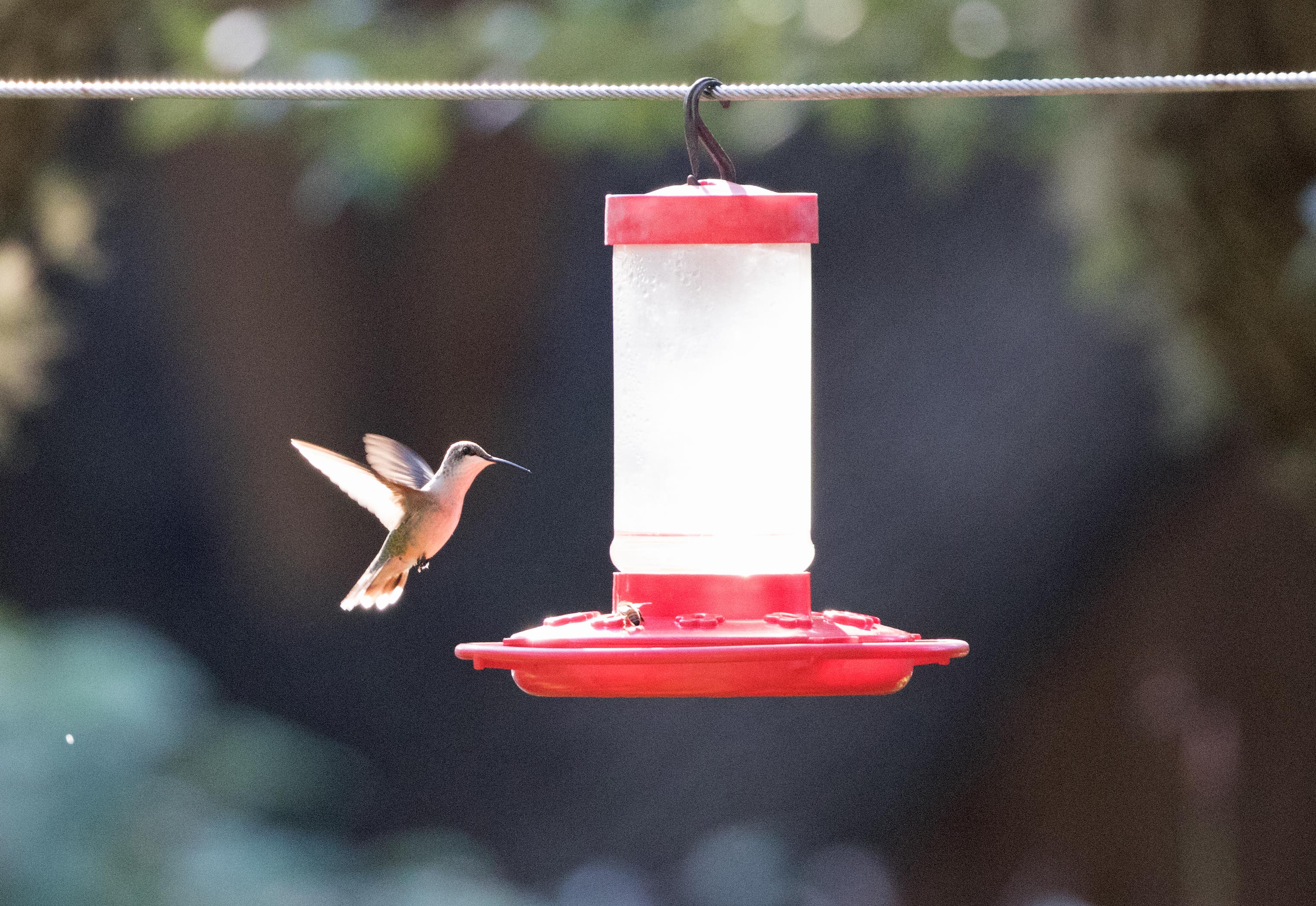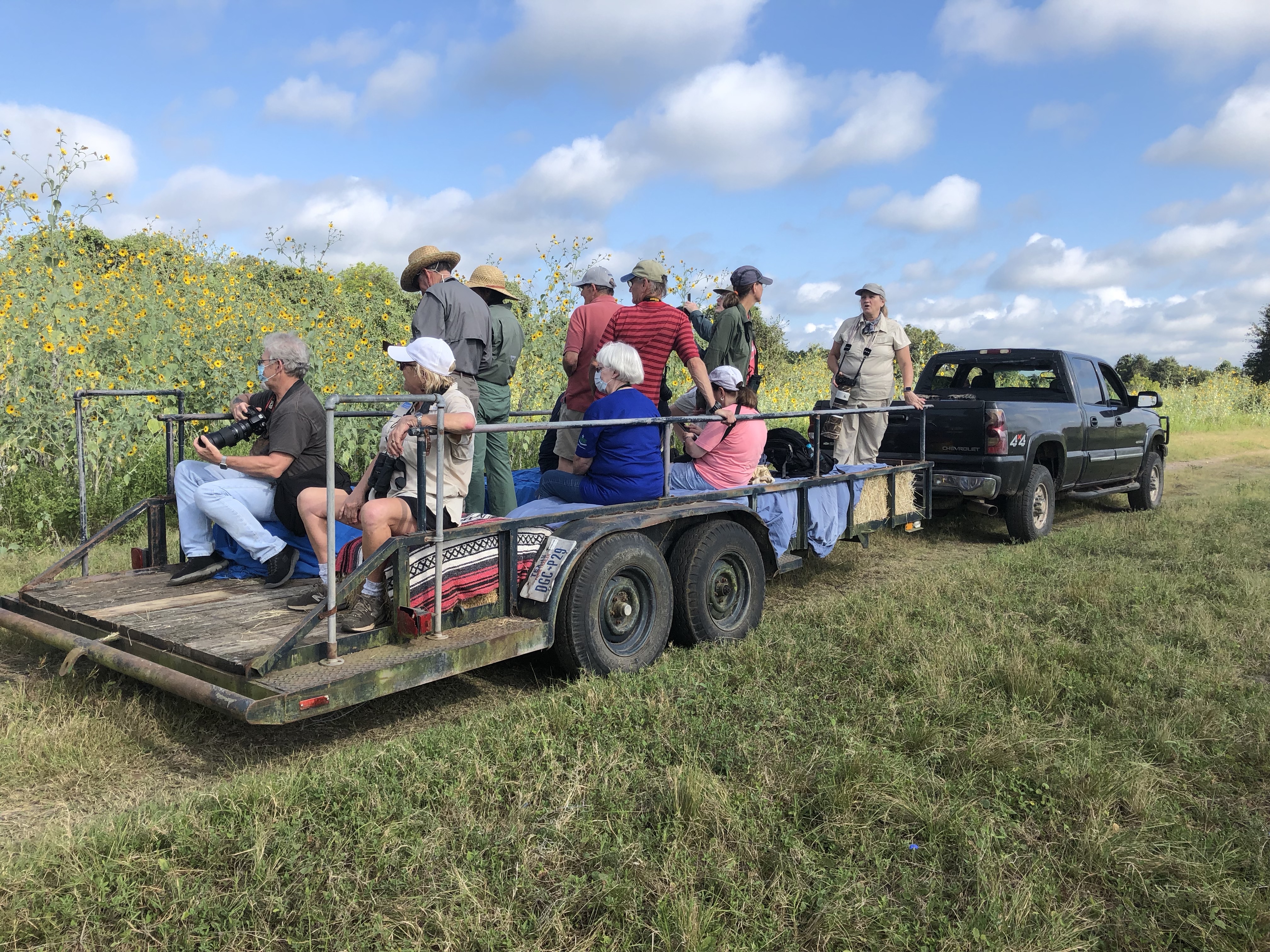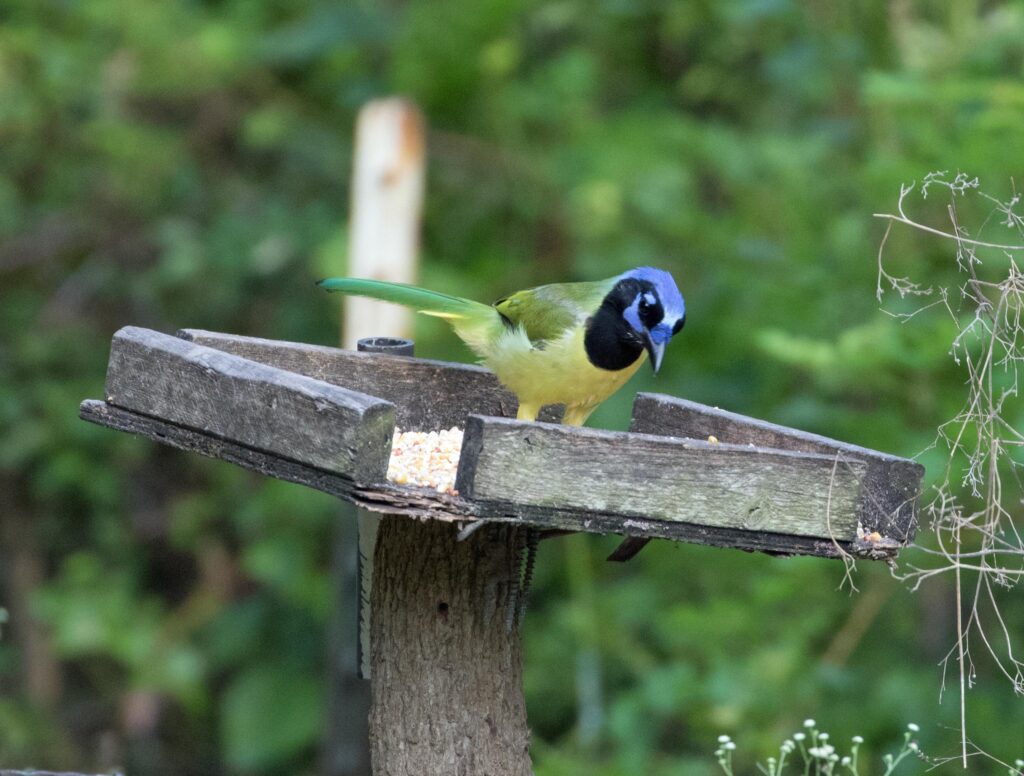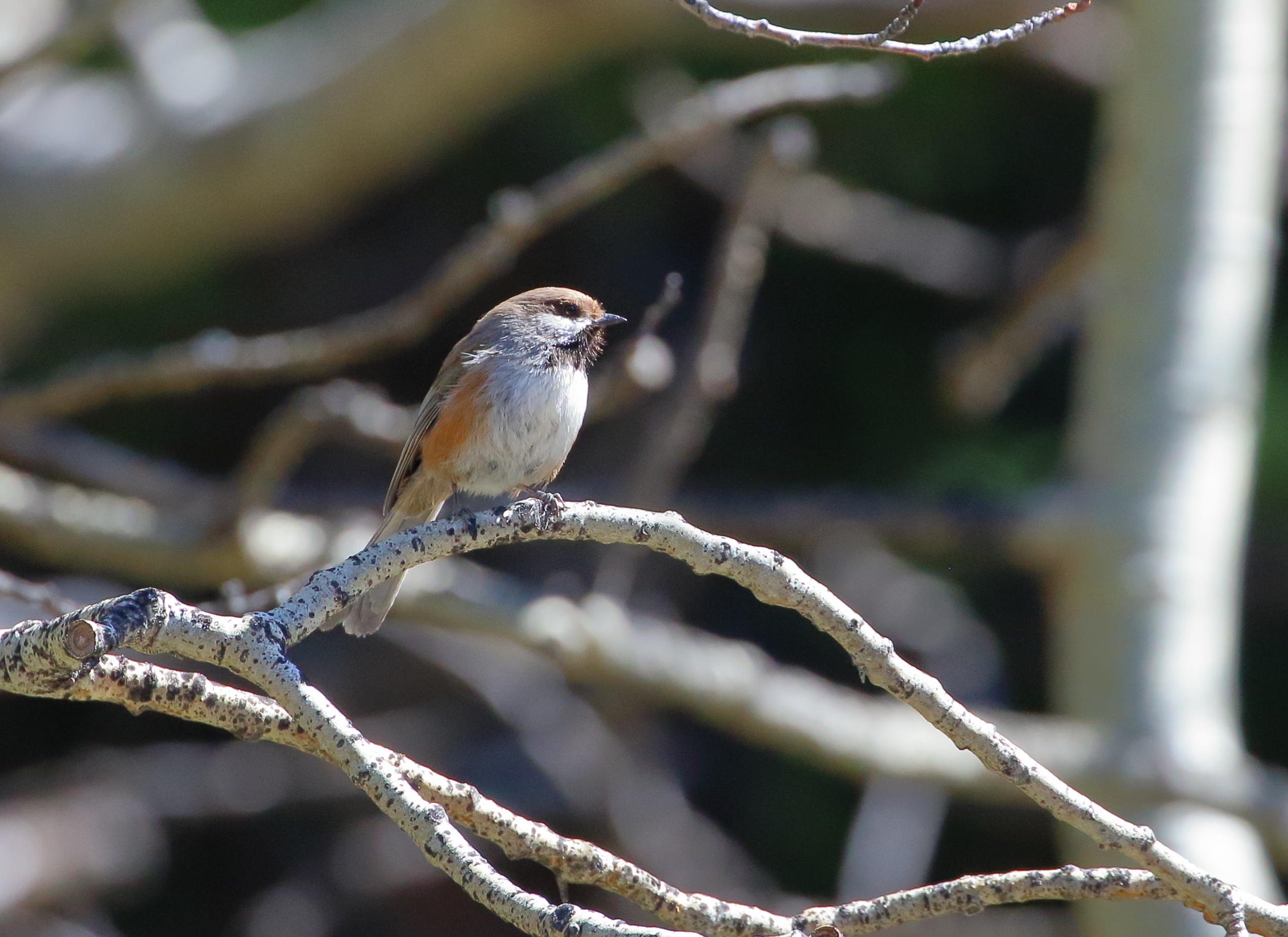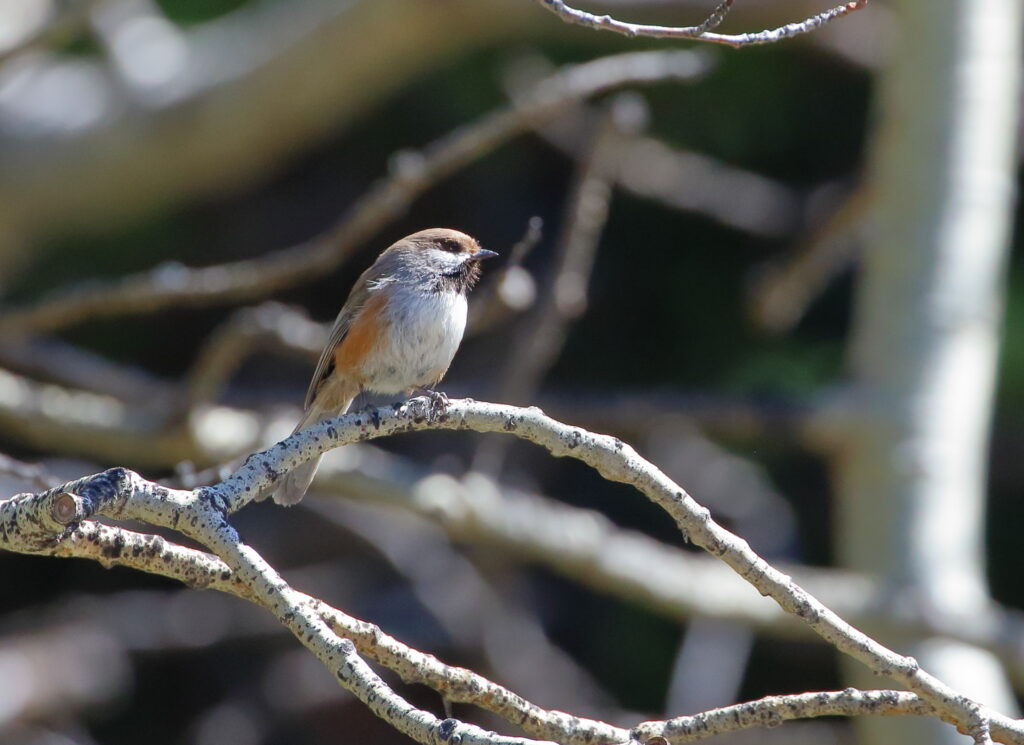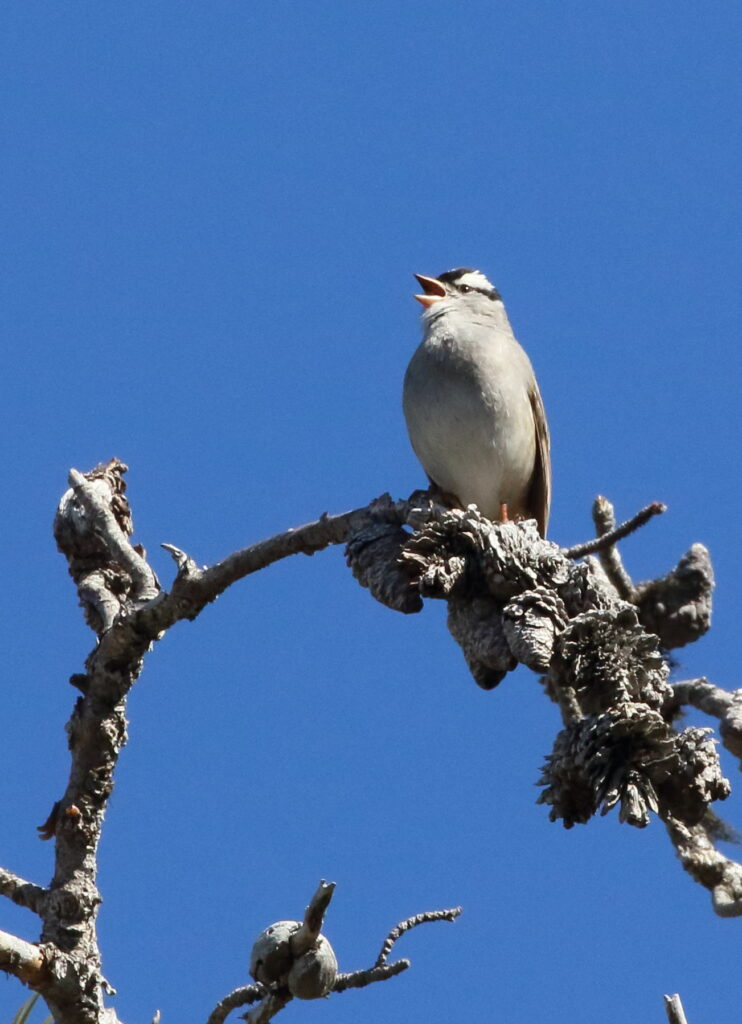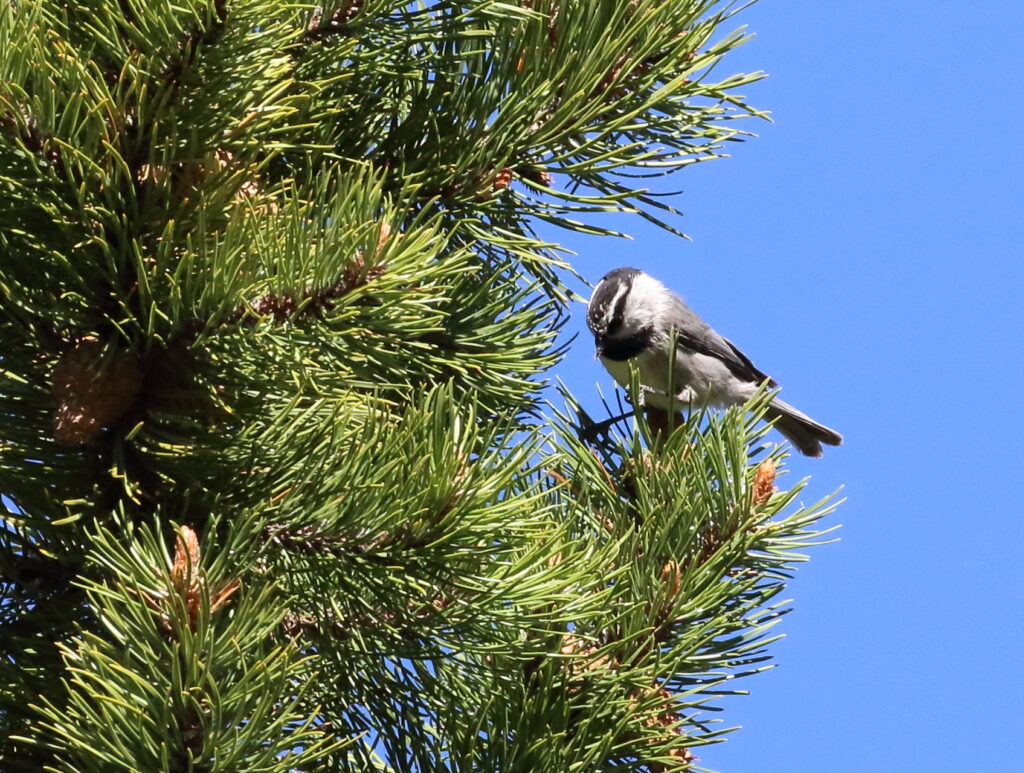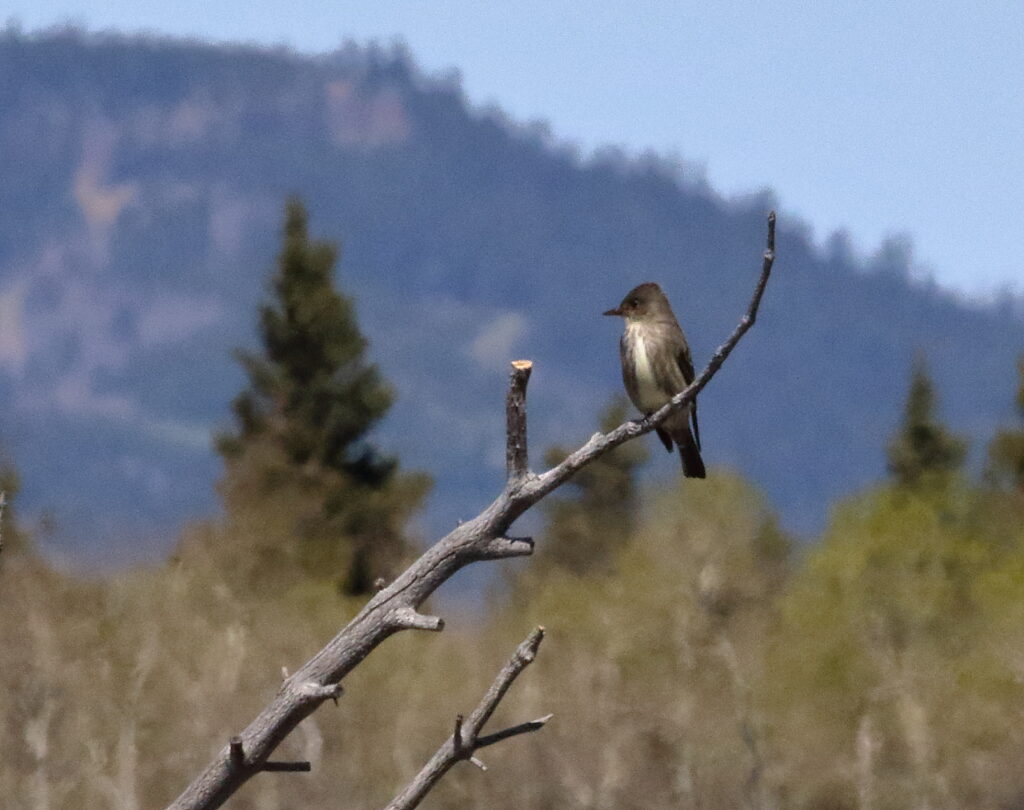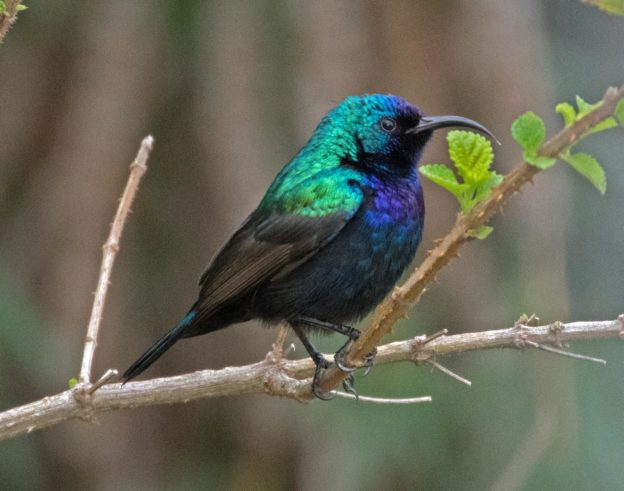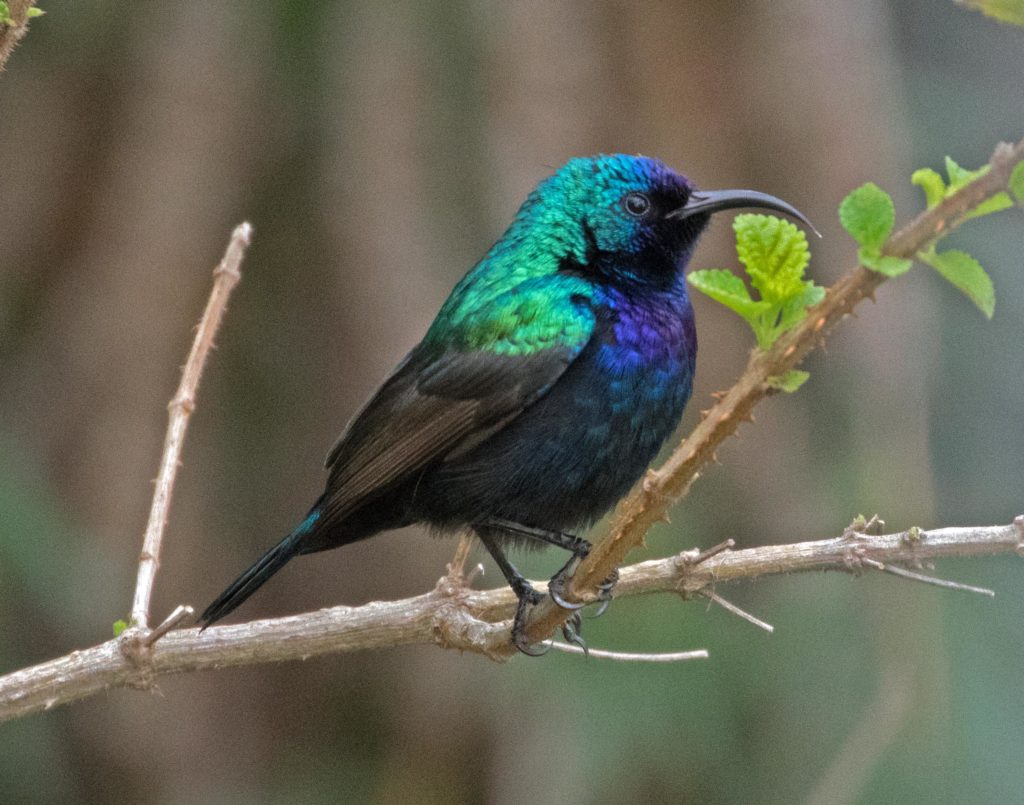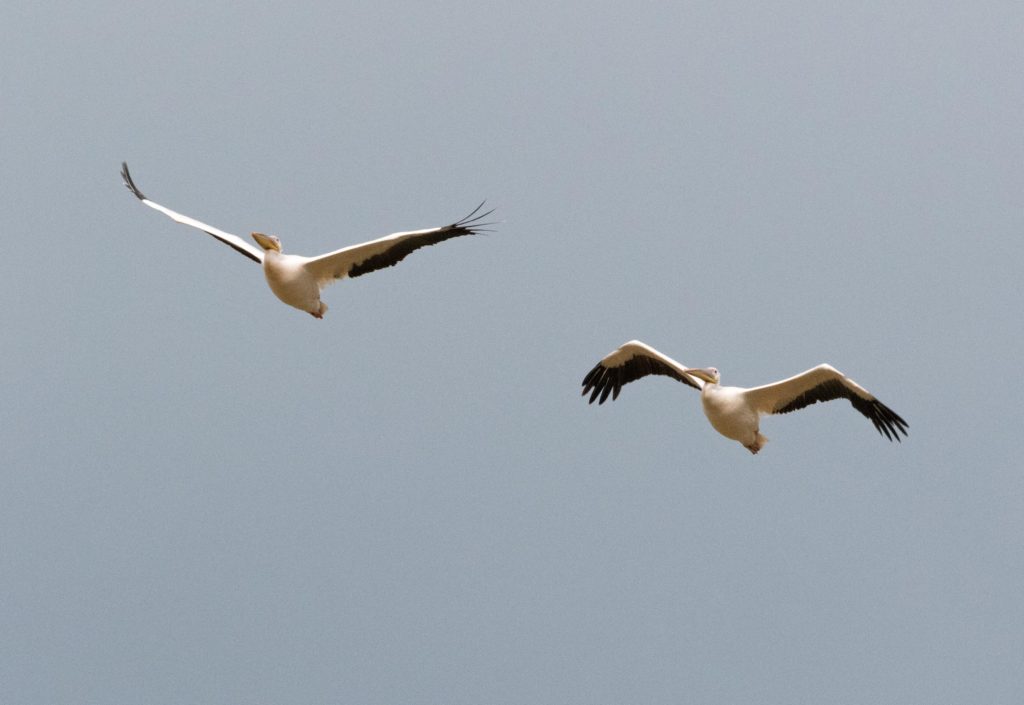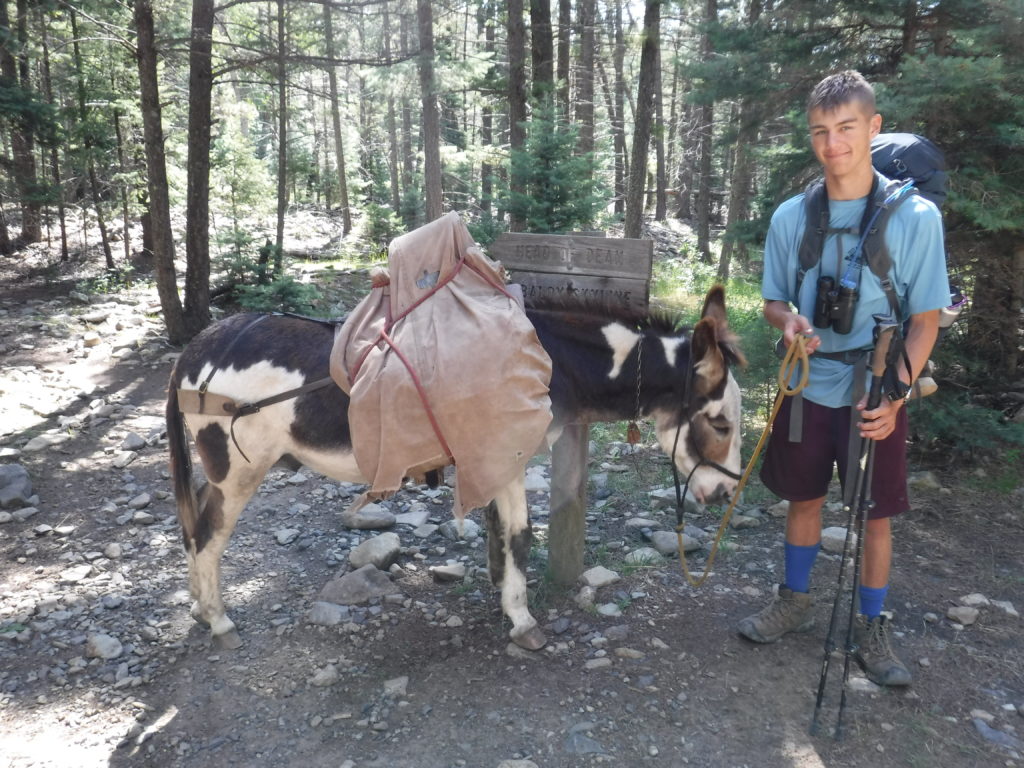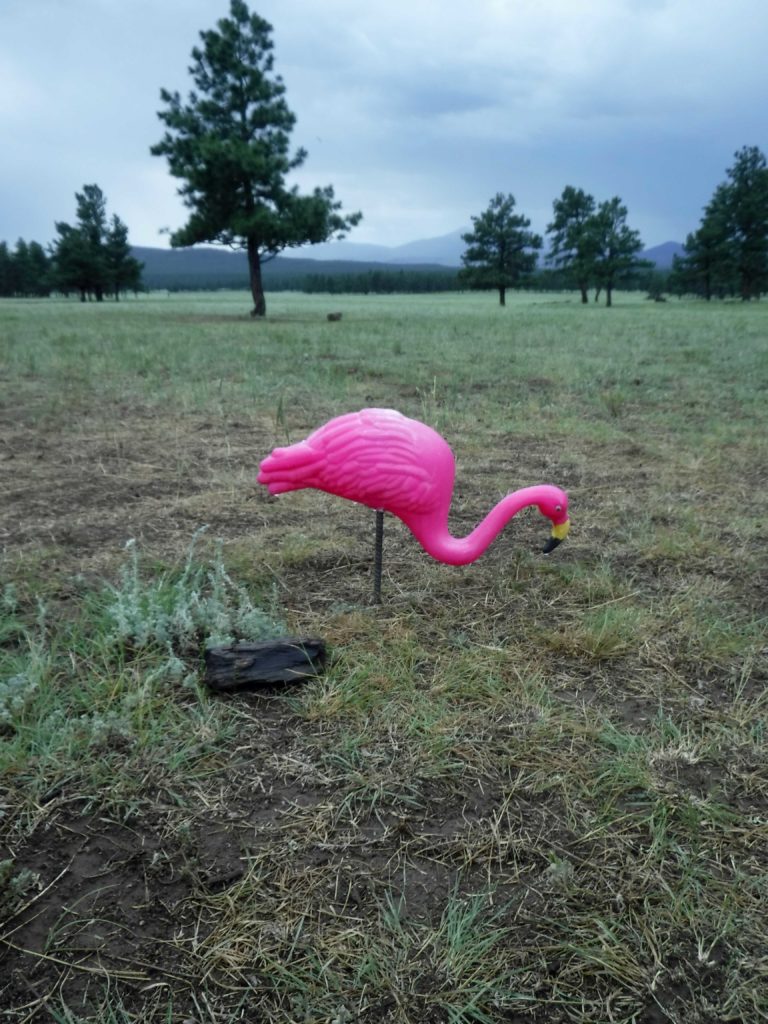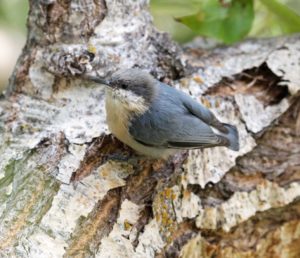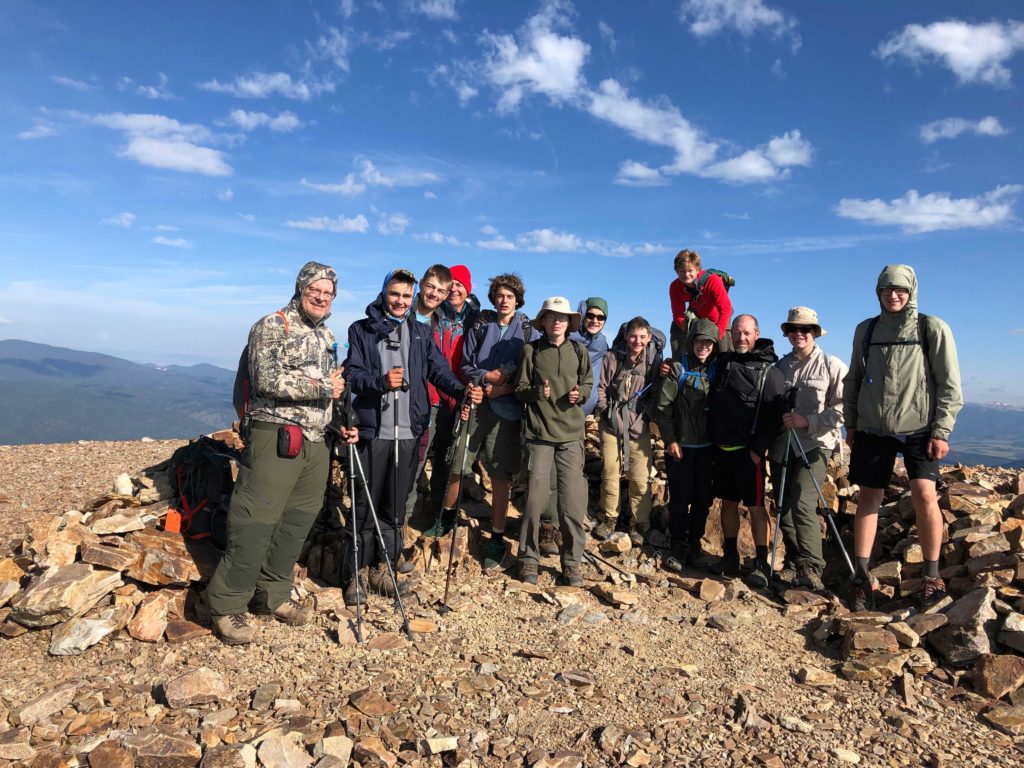This is Braden’s second installment of his epic Florida adventure with our recent guest blogger, Nick Ramsey. In six days, the daring duo hoped to bird the entire length of Florida from N’Orleans to Key West and back—and see 200 species of birds in the process. Day 2 began well when all of a sudden, they were beset by an equipment malfunction. Would they push on? What about the mosquitoes? Read on to find out—and, as usual, please share this saga, which we hope will soon become a major Hollywood movie called “The Big Tear”.
A buzzy rising song, marked by short, evenly-spaced notes, echoed from a nearby mangrove. “Northern Parula?” I asked Nick as he walked up with his dog Dixie by his side.
“Prairie Warbler!” he said, holding up his phone to record the song and then playing it back at the bird. Sure enough, a bright yellow male, complete with eye stripes like a football player, hopped into view, singing its heart out as I snapped dozens of photos. We were at the Lighthouse Point Park and Jetty in New Smyrna Beach, approaching the Atlantic Ocean, a different body of water than the day before. Common Ground Doves called from the mangroves around us, and early-morning beachgoers strolled past as we scanned the dunes for Gopher Tortoises and Wilson’s Plovers. Our primary target this morning was a well-known bird of the Atlantic, although not one that was supposed to be this far south: Purple Sandpiper. I’d recently seen my United States lifer on a rocky shore in the Maine winter, and yet one had been reported consistently from this subtropical beach. Soon enough, we located the jetty where the bird had to be, passing a large flock of roosting Royal Terns with a ratty-looking Black Skimmer in their midst. Ruddy Turnstones wandered the beach and Forster’s Terns plunge-dived around us as we walked out on the rocks, scanning for a small, gray shorebird with a slightly curved bill. Right near the end, Nick shouted “I’ve got it!” and sure enough, there it was, acting exactly like every other “jetty bird” I’d ever seen: tame and fearless. With Purple Sandpiper and a Florida sunrise under our belts, we headed back to the car and our next destination: Merritt Island National Wildlife Refuge.
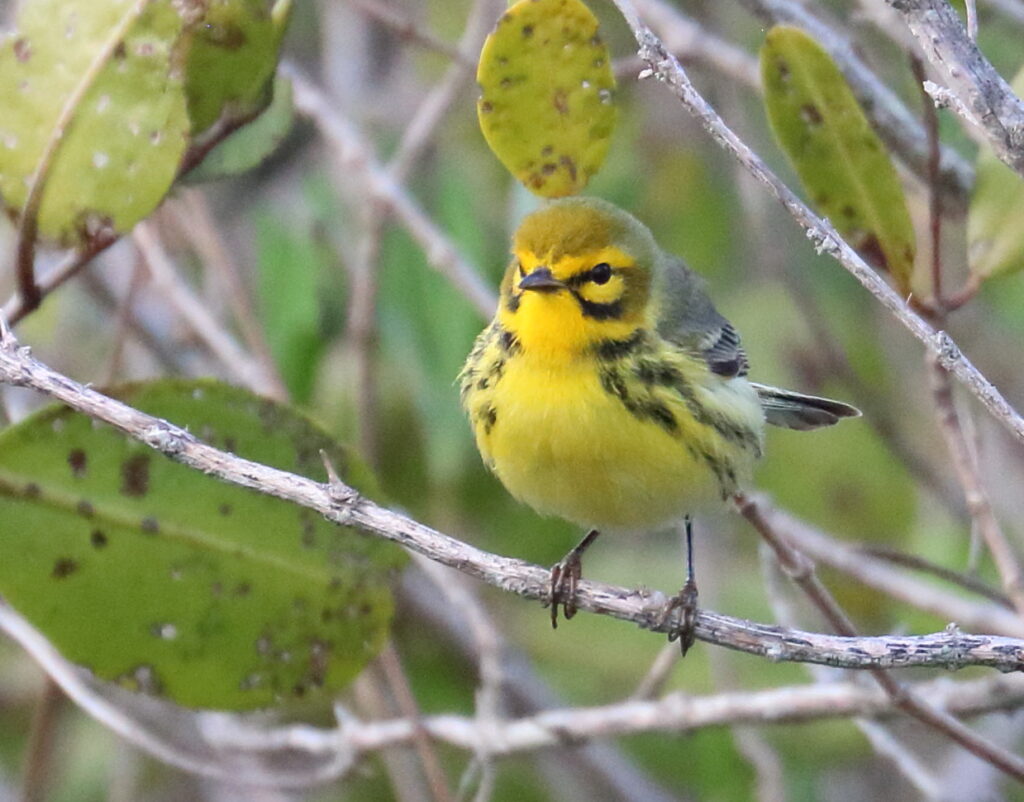
Merritt Island is well-known for its birds, but the island itself is more famous for something else. To the south of the refuge stand the tall, white towers of Cape Canaveral, the site of numerous rocket launches, positioned so that, in case of emergency, the rockets can be safely brought down into the ocean without harming anyone. I was more interested in the Florida scrub habitat of the wildlife refuge, however. Lone pines sprouted dozens of feet above the sea of palms and brambles, and Tree Swallows and Purple Martins flew overhead as we pulled into the parking lot of the Pine Flatwoods Trail. As soon as we got out of the car, we were met by Nick’s grandmother and her boyfriend Bud, whose cabin we had slept at the night before in New Smyrna Beach. I’d heard countless stories of the adventures Nick and his grandma had had, so it was great to finally meet her.
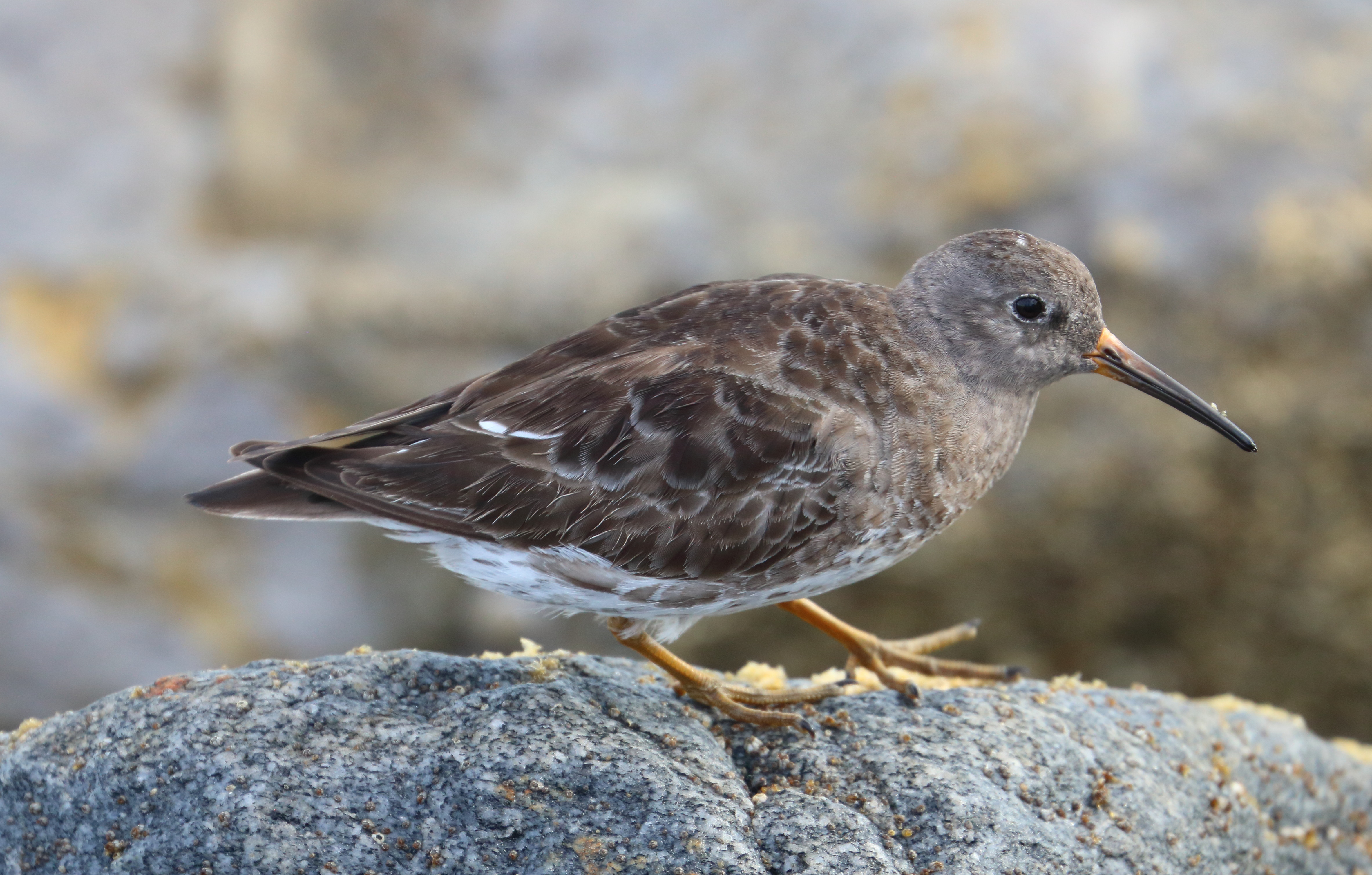
The three of us began walking, with Bud staying behind to watch the car. As we did so, Nick’s grandma handed me a flyer starring a dark blue corvid with a long tail and a mischievous expression—our major target for this outing. The flyer informed me that Florida Scrub-Jays occurred only in roughly 51 locations across the state, threatened by habitat loss from the clearing of Florida scrub habitat. As Florida’s only endemic bird species—and one that is Federally Endangered—the scrub-jay’s remaining habitats would fortunately remain undeveloped for the foreseeable future. In no time, Nick pointed out the call of a scrub-jay, and we began scanning the brush intently. Suddenly, I spotted several long-tailed silhouettes flying in the distance. As they grew closer, their plumage matched the color of the blue sky above.
“There they are!” I yelled, and the three of us raised our binoculars to watch them alight on a nearby bush. Several more scrub-jays called from behind us, gradually increasing our total count to eleven, and given their conservation status, it was heartening to see so many of them.
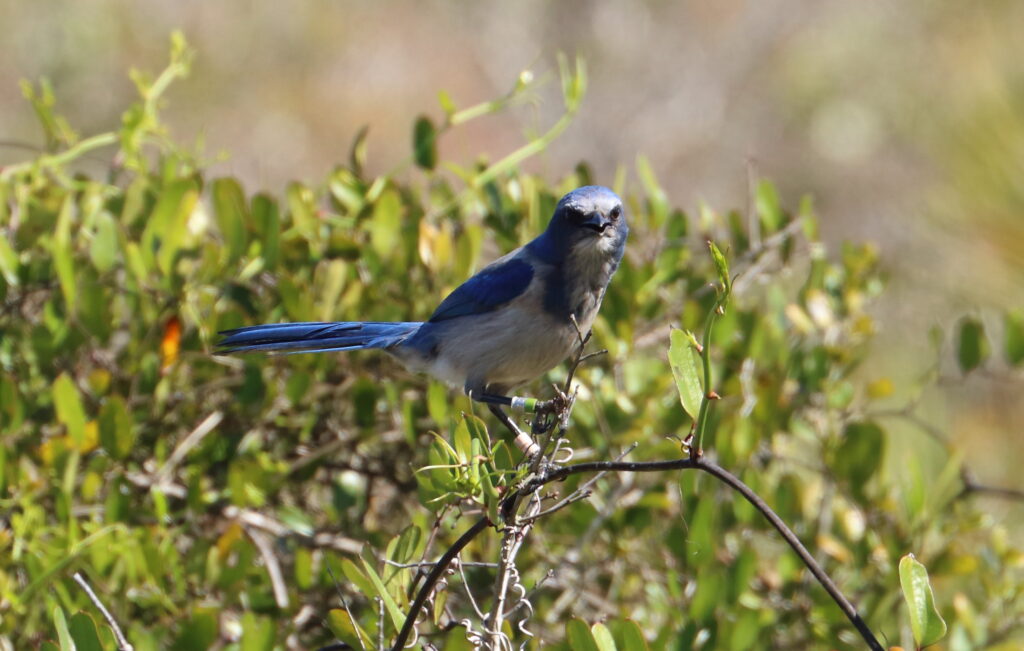
We high-fived, then headed back to the car to drive to our next spot. As we pulled out of the empty parking lot, however, Nick slammed on the brakes, pointing forward.
“Swallow-tailed Kite, incoming!”
We’d been watching the skies all of yesterday and today looking for this neotropical migrant, a species with a population of only several thousand in the United States. I jumped out of the car, armed with my camera as two of the most beautiful birds I’d ever seen soared several feet above us, their white-and black plumage shimmering in the rising heat. They circled for a few moments, allowing me to snap some decent photos, then resumed their journey, long tails flowing behind them. The birds reminded me of oddly-proportioned, differently-colored Barn Swallows, which is indeed how they had gotten their name. My dad and I had seen this species while zip-lining through the cloud forest of Ecuador, but it had been five years since then and this was a much better look. As I got back into the car, Nick smiled. “They never give looks that good! Did you see their backs??? It’s impossible to see their backs!!”

We spent most of the rest of the day at Merritt Island, driving loops and investigating the visitor center. Just like at St. Marks, the ducks that the refuge was famous for weren’t here in large numbers, though we did find one flock of American Wigeon and Northern Shoveler. However, White and Glossy Ibises, the three egrets, Little Blue, Green and Tricolored Herons, and Roseate Spoonbills put on spectacular shows, feeding in almost every habitat from lawns to roadside ditches to marshy lagoons. Many of the birds were in breeding plumage, sporting fun plumes and colors that I’d never seen before. These plumes were the exact feature that had led to the birds’ downfall a century earlier. Snowy and Great Egrets especially had gorgeous white feathers reminiscent of wedding dresses trailing from their wings that had attracted the lady’s hat industry in the nineteenth century. Millions of birds were slaughtered during this time, and the two species disappeared from much of their range. However, with the beginning of a conservation movement in the early twentieth century, these birds soon began to recover, once again becoming common across the southern United States.

Immediately after seeing the scrub-jays and kites, we drove to a small path overlooking a large lagoon. Manatees surfaced and at the visitor center Nick found two White Peacock butterflies, beautiful white insects with intricate orange details on their wings. And while looking for a previously-reported Eurasian Wigeon at the edge of the refuge, we came across a Prickly Pear Cactus fruiting! We both tried one of the magenta fruits after brushing off the spines, and they weren’t half bad!
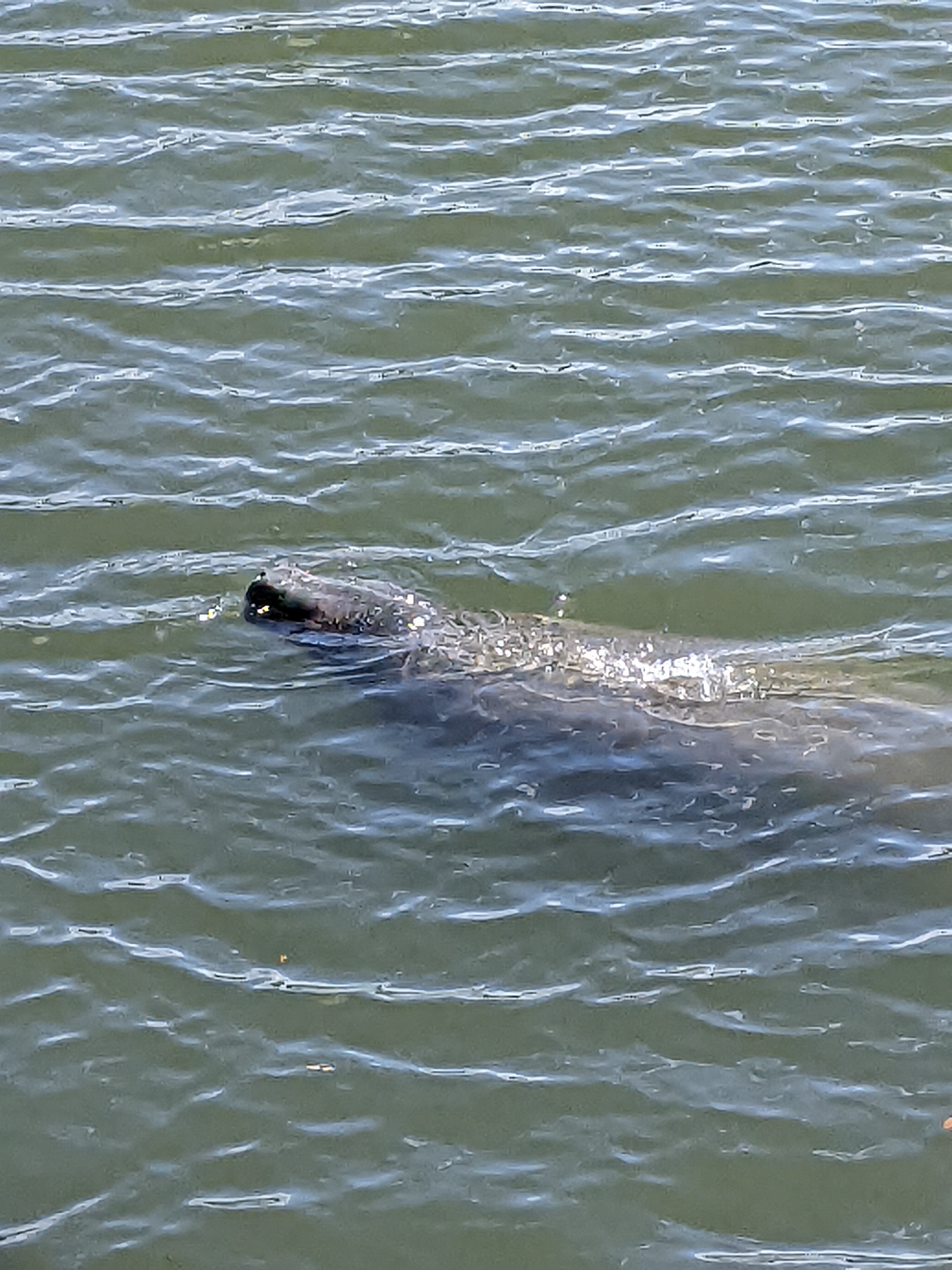
When we got back in the car, Nick began rolling up the windows when we heard a click, followed by one of our back windows falling down into the door, its mechanism broken. Deciding to deal with the problem later, we taped a large yellow towel to the window with Nick’s emergency supply of duct tape, then followed Nick’s grandmother to a nearby Thai restaurant where she bought us a tasty lunch. We said our farewells to her, then drove to an Ace Hardware to look for solutions to our window problem. Eventually, we came up with a makeshift window of plastic wrap and duct tape, which Nick carefully applied while I fed Dixie and a daring, dog-food-snatching Boat-tailed Grackle. Back on the highway, we headed south towards our last spot for the day as a light rain started, testing Nick’s makeshift window. The plastic held, despite making loud smacking sounds, and we pulled into a shady-looking restaurant on the side of the highway called Doc’s Bait House. A Black-headed Gull, another northeastern vagrant, had been hanging out at this strange place, and we hoped to add it to Nick’s life list.

Unfortunately, as we walked around in the light rain and the setting sun’s light, no Black-headed Gull showed. The birds were active, though—Lesser Black-backed Gulls, Brown Pelicans, Forster’s Terns and other common coastal birds circled the harbor in impressive numbers, and a Wood Stork flew right over us on its way to its roost. It was a great way to end the birding part of day two, as Nick put another layer of plastic over the window and we headed south towards the outskirts of Miami. A long night lay ahead of us and little did we know that our birding luck was about to run out.

